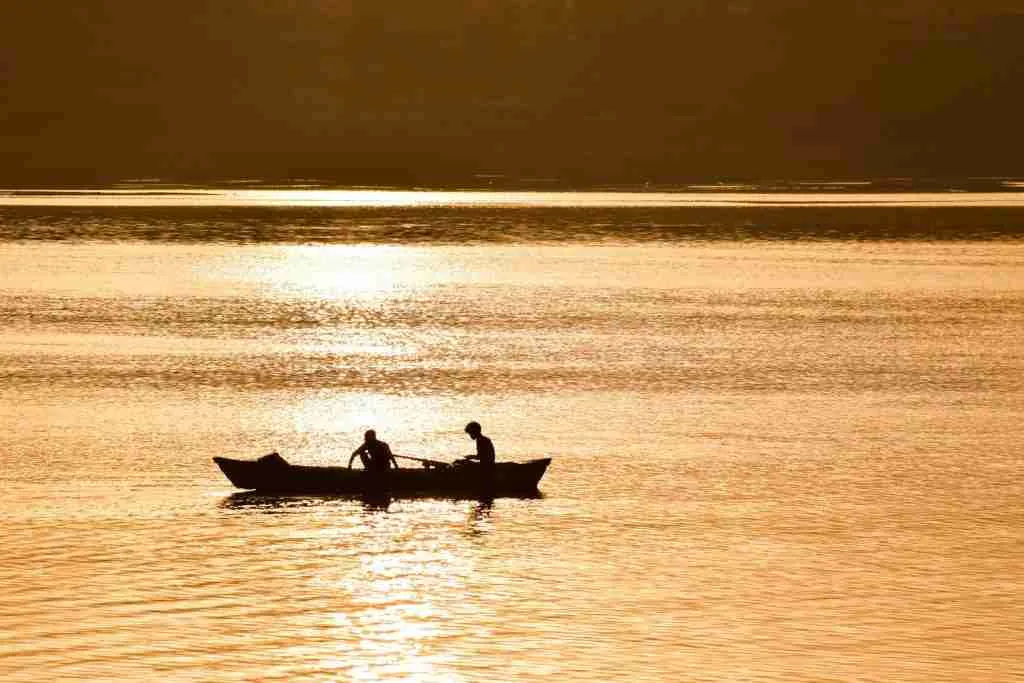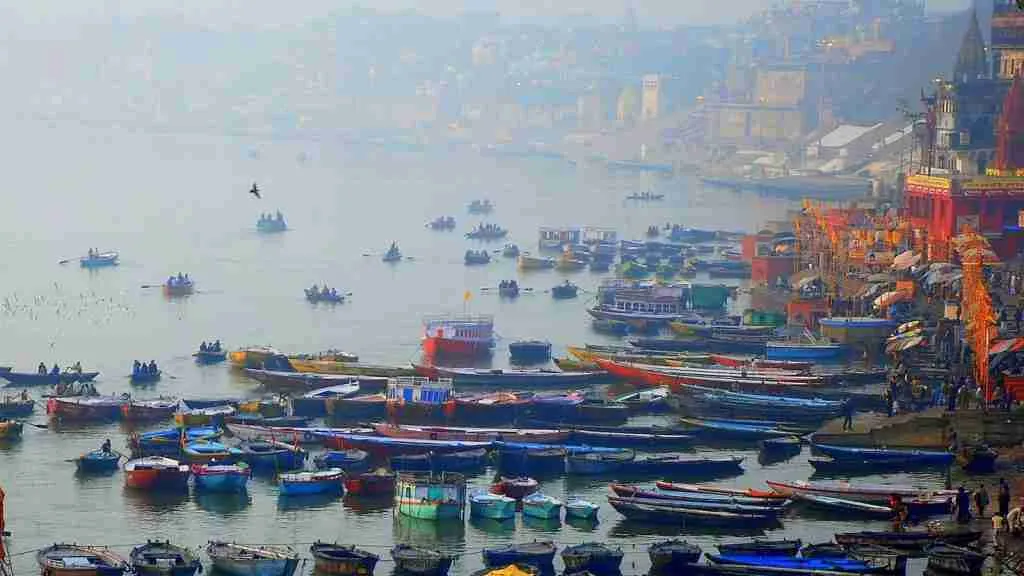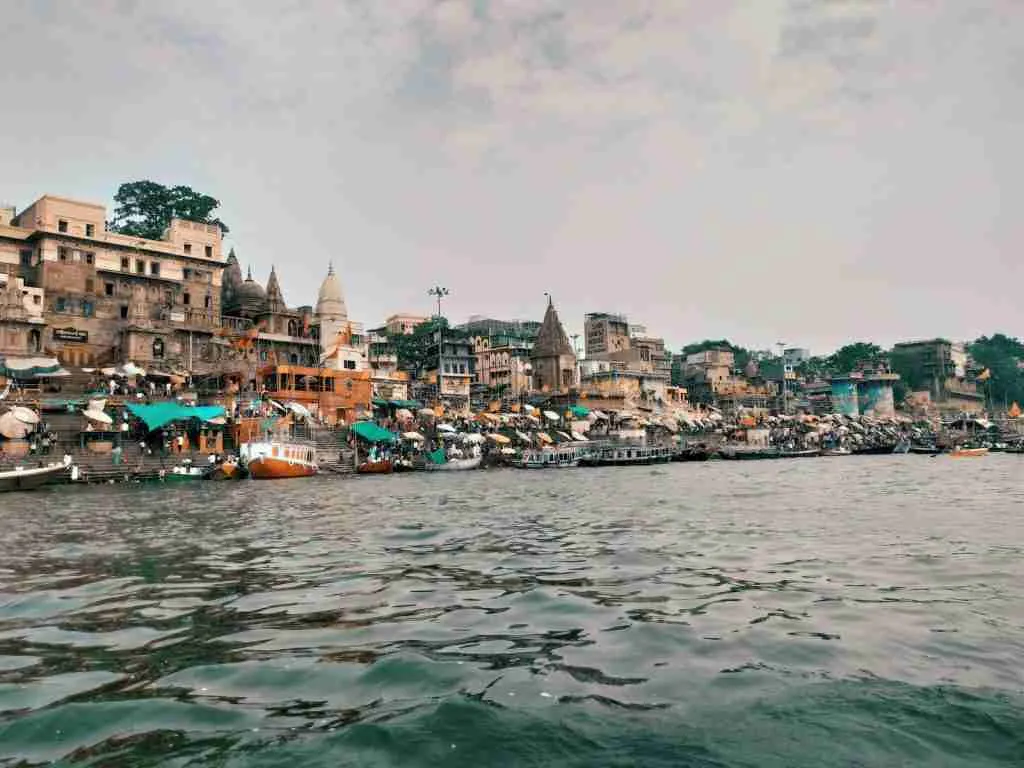27 Facts About the Ganges River (Let’s Dive In)
-
The Ganges River has a unique self-purifying property due to bacteriophages.
-
The Ganges River flows through India and Bangladesh, impacting regions in Nepal and China.
-
The Ganges River is also known as the Ganga in Sanskrit.
-
The Ganges River originates from the Gangotri Glacier in the Himalayas.
-
It’s part of one of the few riverine islands in the world, Majuli.
-
The river is featured in the national anthem of India.
-
Varanasi, one of the world’s oldest inhabited cities, is on its banks.
-
The Ganges River is home to the Ganges river dolphin, an endangered species.
-
The Ganges River sometimes vanishes underground due to geological structures.
-
There is a debate over its exact length, with figures varying between 2,525 km and 3,877 km.
-
It flows just 200 km through the Himalayas before reaching the plains.
-
The river is known by multiple names like Bhagirathi, Alaknanda, and Vishnupadi.
-
Chemically treated flowers from religious offerings add to its pollution.
-
Water pollution costs India about 3% of GDP in health expenses, much from the Ganges.
-
Varanasi releases 200 million liters of untreated sewage into the river daily.
Table of Contents
1. The Ganges River is considered one of the most sacred rivers in Hinduism, personified as the goddess Ganga.
The Ganges holds a special place in Hindu hearts, revered as the goddess Ganga. Bathing in its waters is believed to wash away sins.
Millions visit its banks yearly to perform rituals, seeking spiritual purification. The river’s divine status shapes India’s cultural and religious life.
2. It originates from the Gangotri Glacier in the Himalayas, at an elevation of about 3,892 meters.
The Ganges starts its journey at the Gangotri Glacier in Uttarakhand, India. This glacier sits high at 3,892 meters above sea level.
Pilgrims trek to Gangotri, a sacred site, to honor the river’s holy source. Its icy waters form the Bhagirathi, a key headstream.
3. The river flows approximately 2,525 kilometers from its source to the Bay of Bengal.
Stretching about 2,525 kilometers, the Ganges is one of India’s longest rivers. It travels from the Himalayas to the Bay of Bengal.
Its path crosses multiple states, supporting millions with water and resources. The journey ends in a vast delta, rich in biodiversity.
4. The Ganges River is Home to a Diverse Array of animal life.

READ ALSO: 27 Facts About The Amazon River (Let’s Dive In)
The Ganges River hosts a multitude of different animals, harboring numerous creatures that are endemic to the region. Among many others, this river provides a home for the highly endangered Gangetic dolphin.
Additionally, the Ganges Shark and Ganges River Turtle are two other species that have made this physique of water their habitat.
5. The Ganges River is a Major Transportation Route in India.
Majestically calling home over 58 towns, the Ganges River is India’s lifeline for transporting both goods and people. Its lengthy journey starts from an elevation of 2,600 meters in the Himalayas and terminates at Bangladesh’s Bay of Bengal at a mere 33cm altitude.
Along its banks are a network of busy ports enabling large barges and small farm boats to travel up and down its path, facilitating regional trade efforts.
6. The Ganges Basin is one of the most densely populated regions on Earth, home to over 400 million people.
Over 400 million people live in the Ganges River Basin, making it incredibly crowded. This vast area spans India and Bangladesh.
Fertile lands draw settlers, boosting agriculture and trade. Yet, this density strains the river with pollution and overuse.
7. The river is heavily polluted due to sewage, industrial waste, and religious offerings, making it one of the most polluted rivers in the world.
Sewage, industrial waste, and offerings pollute the Ganges, harming its waters. It ranks among the world’s most contaminated rivers.
High bacteria levels threaten health, yet millions rely on it daily. Cleanup efforts struggle against the scale of the problem.
8. The Ganges River has a Rich History, with ancient Hindu Texts and Legends associated with the river.

READ ALSO: 25 Fun Facts About India | You Didn’t Learn in School
The Ganges River, steeped in a rich history, finds its narrative woven into ancient Hindu texts and legends. Renowned poems like Ganga Lahiri and Ganga Avataram celebrate its sacred waters, while mythological tales, such as the purifying touch of Lord Shiva’s Ganga descent, further enhance the river’s mystical significance.
This cultural tapestry of verses and legends continues to shape the profound reverence that the Ganges command in Hindu traditions.
9. Hindus believe that bathing in the Ganges can wash away sins, and many pilgrimage sites are located along its banks.
Hindus see the Ganges as a sacred purifier, cleansing sins through bathing. Pilgrimage sites like Varanasi draw millions yearly.
These holy spots host rituals and festivals, deepening the river’s spiritual role. Devotees believe a dip brings divine blessings.
10. The Ganges is fed by several headstreams, including the Bhagirathi and Alaknanda, which meet at Devprayag to form the main stem of the Ganges.
The Bhagirathi and Alaknanda rivers merge at Devprayag to form the Ganges. These Himalayan headstreams shape its early flow.
Devprayag is a sacred site where pilgrims gather to witness this union. The confluence symbolizes spiritual and natural harmony.
11. In Bangladesh, the Ganges joins the Brahmaputra River to form the Meghna River, which empties into the Bay of Bengal.
In Bangladesh, the Ganges, as the Padma, merges with the Brahmaputra. Together, they form the Meghna, flowing to the Bay of Bengal.
This merger creates the world’s largest delta, teeming with life. The region supports fishing and farming for millions.
12. The Ganges River is also home to a number of important Hindu festivals and ceremonies.
READ ALSO: 24 Facts About The Nile River (You Must Know)
The Ganges River is no stranger to religious rituals and festivities. A particularly important one, Kumbh Mela, takes place every twelve years. Hindus gather around its banks in reverence for their faith and its role in their spiritual lives.
No other river carries the same cultural significance as the Ganga does. The water of life and humanity’s indisputable importance meld together at Kumbh Mela – a holy congregation like no other celebrated in India.
13. The Ganges River Dolphin, an endangered species, is found only in the Ganges and its tributaries.
The Ganges River Dolphin, a rare species, lives only in this river system. Pollution and habitat loss endanger its survival.
Known as “susu” for its sounds, it uses echolocation to hunt. Conservation efforts aim to protect this unique creature.
14. The Farakka Barrage, built in 1975, has caused tensions between India and Bangladesh over water sharing.
The Farakka Barrage, built in 1975, diverts Ganges water to India’s Hooghly River. This has sparked disputes with Bangladesh.
Reduced water flow harms Bangladesh’s agriculture and ecosystems. Diplomatic talks continue to address this ongoing issue.
15. The Ganges River is also Home to a number of threatened plant species.

READ ALSO: 25 Facts About The Mississippi River You Didn’t Know
The Ganges River contains a remarkable array of plant species, some of which are even considered to be threatened due to population decline within the river and its surroundings.
Among these species are two of the most well-known: the sacred lotus and the water lily. Such reverence for such plants is held all throughout India.
16. The Ganges has an untapped hydroelectric potential of 51,500 to 128,500 megawatts.
The Ganges River holds a vast potential for hydroelectric power, estimated to range from 51,700 to 128,700 megawatts.
This untapped energy source represents a significant opportunity for sustainable development, particularly in regions along the river that are in dire need of clean and renewable energy solutions.
17. The river’s delta, formed by the Ganges and Brahmaputra, is the largest in the world and supports a rich biodiversity.
The Ganges and Brahmaputra form the world’s largest river delta. This area brims with diverse plants and animals.
Mangroves, tigers, and birds thrive in this fertile region. It also sustains fishing and farming communities.
18. Hindus believe that immersing ashes in the Ganges ensures a direct path to heaven.

READ ALSO: 22 Facts About The Indus River Unveiled
In Hindu culture, the Ganges River is of immense spiritual significance. Immersing ashes in its holy waters aids the departed soul in finding peace and avoiding a return to its previous life. The river’s sacred water cleanses the deceased of sins and protects the family from supernatural disturbances.
The ritual is complemented by scientific reasons, as human ashes contribute to soil fertility. Funeral direction teams assist families in performing this ritual, ensuring a dignified ceremony.
19. The Ganges creates the world’s largest delta, the Sundarbans.
The Ganges River flows into the Bay of Bengal, where it merges with the Brahmaputra River, together forming the Sundarbans Delta, the largest delta on the planet.
This vast and fertile region is not only a critical habitat for a wide range of wildlife, including the famous Bengal tiger but also supports millions of human lives through agriculture and fishing.
The Sundarbans are recognized for their unique mangrove forests, which play a crucial role in protecting inland areas from storm surges and erosion.
20. The Ganges River is also home to a number of wildlife sanctuaries and national parks.
Deep within India lies the Ganges River, sprawling out in various directions and harboring many biodiversity. Wildlife sanctuaries lie scattered along its banks, creating new homes for indigenous animals.
Notable among them is the Sundarbans National Park, with idyllic wildlife thriving among these wetlands and mangrove forests. It is noteworthy as the natural home of the Royal Bengal Tiger and one of Earth’s most diverse park ecosystems.
21. The river’s basin covers about 1,000,000 square kilometers, making it one of the largest river basins in the world.
The Ganges Basin spans roughly 1,000,000 square kilometers across India and Bangladesh. It’s among the world’s largest river basins.
Its size supports ancient civilizations and modern agriculture. The basin’s fertility drives dense human settlement.
22. The Ganges River is Home to a number of Major Cities, including Kolkata, Patna, and Varanasi.

READ ALSO: 23 Fun Facts About the Missouri River (Missouri Marvels)
The Ganges River, often considered the holiest river in all of India and other parts of South Asia, is home to multiple major cities. Located in the state of West Bengal, Kolkata is one such metropolis situated alongside its banks.
Simply eastward, on the northeastern side of India, lies Patna, where locals have celebrated the religion known as Hinduism for thousands of years. The region is dotted with numerous temples, many of which are situated along the banks of the Ganges River.
Also basking along its shallow depths, to the northeast, lies Varanasi – a cultural center representing an immense number of spiritual customs amongst Hindus worldwide.
23. The Ganges is home to over 350 species of fish, many of which are unique to the river.
Over 350 fish species swim in the Ganges, many found nowhere else. This diversity supports the river’s ecosystem.
Local communities rely on these fish for food and income. Pollution threatens their survival, demanding conservation efforts.
24. The Ganges was designated as India’s national river in 2008 by then-Prime Minister Dr. Manmohan Singh.
In 2008, Dr. Manmohan Singh named the Ganges India’s national river. This aimed to boost conservation efforts.
The National Ganga River Basin Authority was formed to manage cleanup. Progress remains slow despite significant funding.
25. The Ganges flows through important cities like Haridwar, Allahabad (Prayagraj), and Kolkata.
The Ganges passes through key cities like Haridwar, Prayagraj, and Kolkata. Each city thrives on the river’s resources.
Haridwar hosts the Kumbh Mela, while Kolkata’s port relies on the Hooghly. Prayagraj marks a sacred river confluence.
26. In Hindu mythology, the Ganges is said to have flowed from Lord Shiva’s hair.
Myths describe the Ganges flowing from Lord Shiva’s hair. He tamed her descent to protect Earth from flooding.
This imagery appears in Hindu art, symbolizing divine control. It underscores the river’s sacred role in spirituality.
27. The river’s water is used for bathing, washing, cooking, and drinking by millions of people, many of whom live in poverty.
Millions, especially the poor, use Ganges water for daily needs. It’s vital for bathing, cooking, and drinking.
Pollution makes this water unsafe, causing health issues. Providing clean water alternatives is essential for these communities.
FAQS
Sacred in Hinduism as goddess Ganga. Famous for spiritual bathing. Hosts major pilgrimages.
Supports 400 million with water. Spiritually vital for Hindus. Drives farming, power.
Starts at Gangotri Glacier, India. Flows through Uttar Pradesh, Bihar. Ends in Bangladesh.
Holy for Hindu rituals. Supports unique wildlife. Culturally and ecologically iconic.
About 2,525 km long. Some claim 3,877 km. Spans India, Bangladesh.
Shaped ancient civilizations. Linked to Bhagiratha’s penance. Central to trade, faith.
Sewage from cities. Industrial chemical waste. Religious offerings add pollution.





